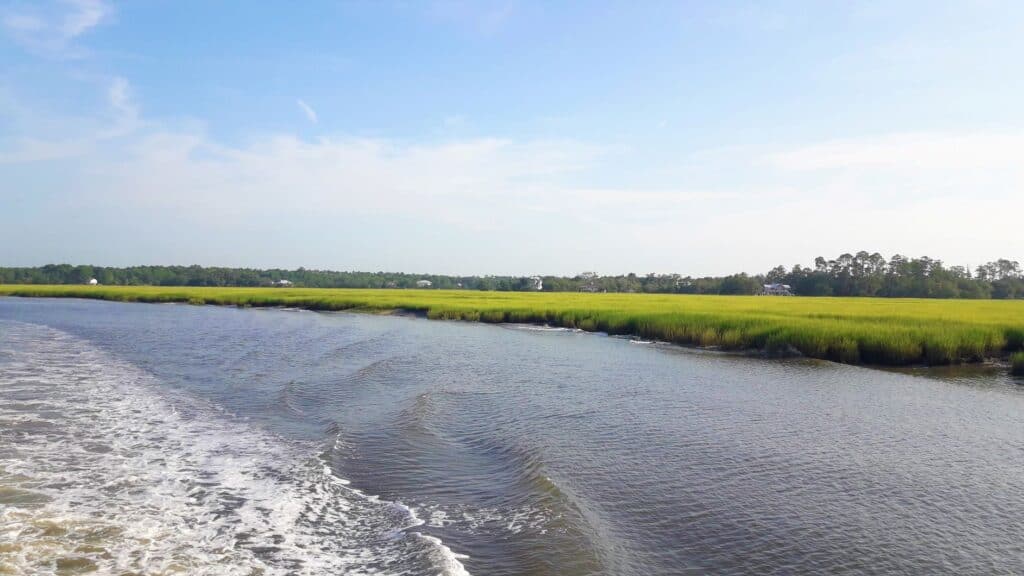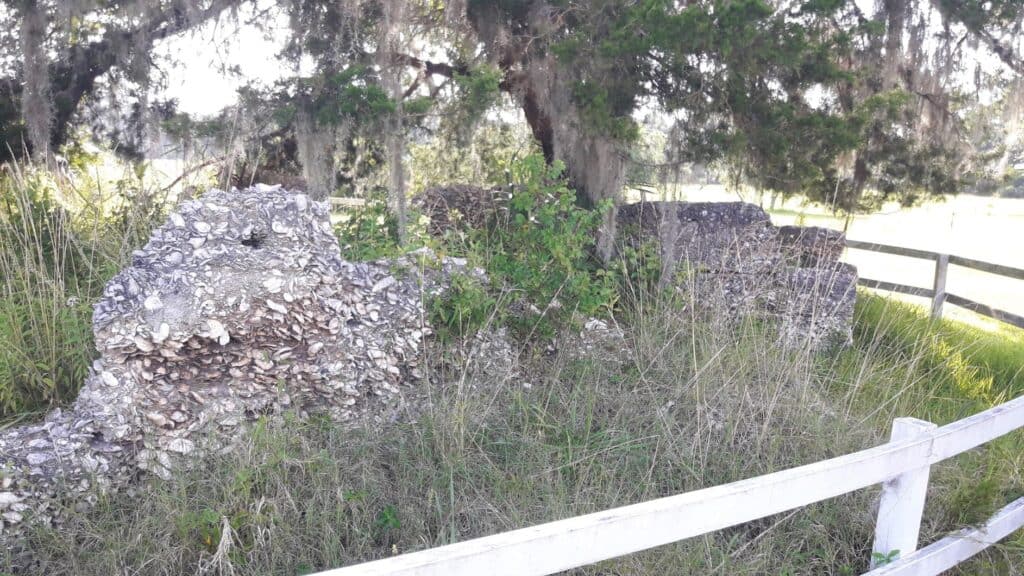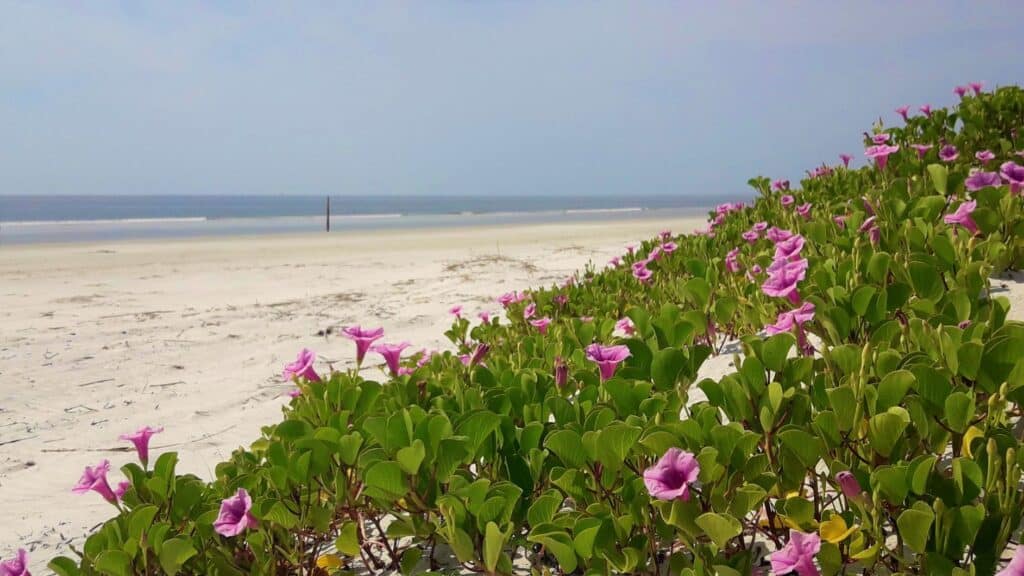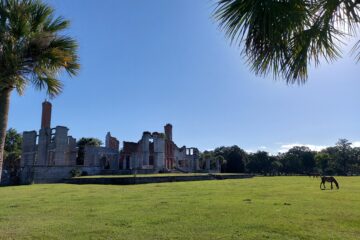Sapelo Island: Georgia’s Most Fascinating Barrier Island

A pleasant thirty-minute ferry ride transports you to a world full of stories of Native Americans, slaves, and business tycoons. One of the many special things about Sapelo Island is that its multi-faceted history is reflected in sights that you can still view (and even stay in) today. Discover them below!
Native American Shell Mounds
These circular Indian mounds built of shells, also known as middens, reflect that Sapelo was home to the oldest Native American civilization in the state of Georgia over 4500 years ago. Creek Indians inhabited the island as recently as the mid-1700s when the British, who acquired this part of Georgia from the Spanish, allowed them to hunt on the island.
Tabby Ruins

In the early nineteenth century, most of Sapelo was bought by one of its most influential owners, Thomas Spalding. In 1805, he was the first planter to grow sugarcane commercially in Tidewater Georgia. For this purpose, he designed and built an octagonal tabby sugar mill whose ruins you can view today. His nearby two-story sugar boiling house called “Long Tabby” has been converted into the island’s Post Office. Ruins of Spalding’s tabby slave quarters can also be found on the north end of the island at Chocolate. These buildings testify that he reintroduced the use of tabby as an important building material on the Georgia coast. With these innovations and more, he gradually developed Sapelo Island into a plantation empire, as by the 1850s he and his children owned 400 slaves here.
Sapelo Lighthouse
In 1820, Spalding gave land to the Federal government for this lighthouse, which aided the growing shipping industry at nearby Darien’s port. Confederate forces removed the lighthouse’s lens before Union occupation of the Georgia coast in the spring of 1862, but the structure was reactivated in 1868 and painted with its distinctive daymark of alternating red and white bands. The lighthouse was seriously damaged by a hurricane and tidal wave of October 2, 1898; supposedly the water rose as high as its first window. Afterwards, it fell out of use until it was restored by the State of Georgia in 1998 so that today it once again aids in navigation.
South End House
The next prominent owner of the island was Howard Coffin, chief engineer of the Hudson Motorcar Co. in Detroit. In the 1920s, he rebuilt Spalding’s 1810 mansion into one of the most palatial homes on the coast and hosted many distinguished guests here, including presidents Calvin Coolidge and Herbert Hoover and aviator Charles Lindbergh, who landed his plane on Sapelo one year after he made his trans-Atlantic plane trip. Later, President Jimmy Carter used the mansion during his administration in 1979. You too can stay here today, as long as you have a group of 16 to 25 people to fill its 10 rooms!
Marine Institute
Due to the Depression, Coffin had to sell the island in 1934. Richard J. Reynolds, Jr., a North Carolina tobacco heir, acquired it and lived here part-time for 30 years. Reynolds, who was interested in the scientific applications of the coastal salt marshes’ ecosystems and estuaries, provided facilities for the University of Georgia Marine Institute, still an important institution on the island. The facility’s main laboratory is in the former dairy barn, and the complex’s centerpiece is an unusual turkey fountain which Reynolds had constructed in 1935.
Hog Hammock
After the Civil War and the collapse of the plantation economy, many former slaves slowly purchased land on Sapelo and established five settlements, only one of which, Hog Hammock, remains today. This community of 43 is comprised mainly of descendants of Thomas Spalding’s slaves, and it is one of the few surviving sites of ethnic African American culture on the south Atlantic coast. Efforts have been made to preserve Sapelo’s rich West African heritage, from spiritual beliefs and folk traditions to the Geechee dialect once spoken by the island’s African American residents.
Nannygoat Beach
Sapelo offers 5.5 miles of uninhabited beaches, but Nannygoat Beach is the most easily-accessible and is undeveloped except for a covered pavilion. This pavilion contains plaques outlining the beach’s flora, fauna (including 225 bird species), and shells so that you are better informed as you strike out for a hike, swim, or shell hunt on the white sandy beach.
Visit Sapelo Island on our Jewels of the South in 9 Days Tour!

No roads go to Sapelo Island so access is restricted to pre-registered visitors only. Access can be acquired by:
- Participating in one of the tours offered by the Reserve/State
- Arranging a private day trip or overnight stay through one of the Hog Hammock community residents
- Making reservations for a group to stay at either the Reynolds mansion or Cabretta campground
- Having work or business to attend to with the Reserve, DNR, the Marine Institute, or a private resident of the Hog Hammock community


